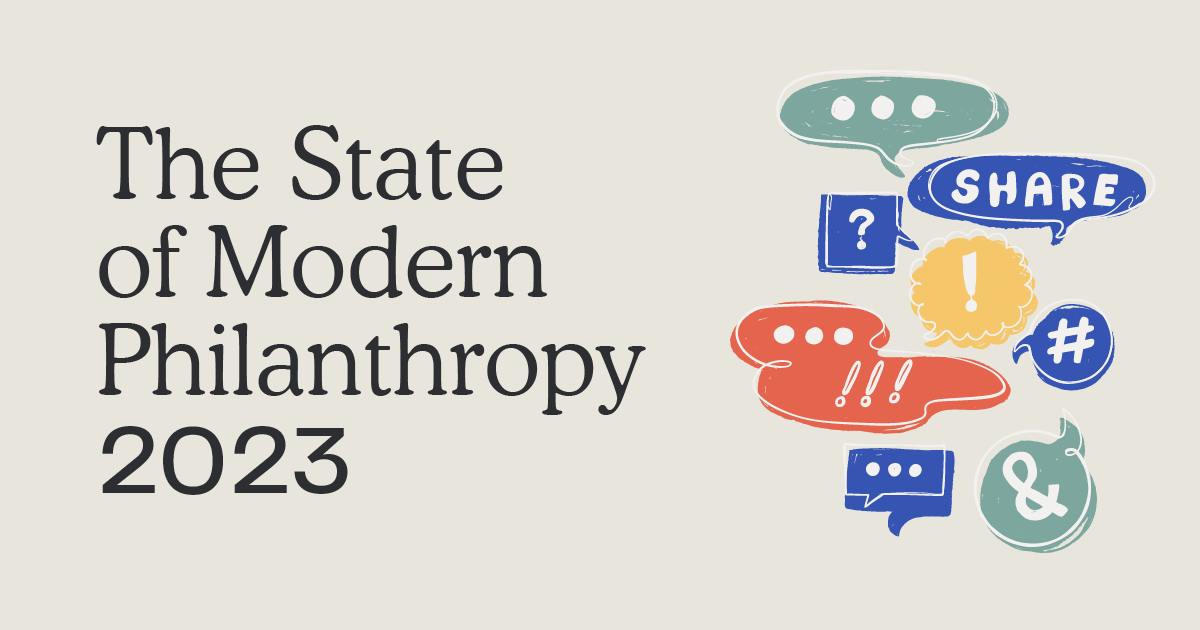4 Takeaways on the Nonprofit Overhead Crisis from Dan Pallotta’s “Uncharitable”

Request a Demo
Learn how top nonprofits use Classy to power their fundraising.
If you’re concerned about how the public perceives nonprofit overhead, you’re not alone. Charity overhead is a topic that has weighed on nonprofit leaders’ minds for decades. Historically, discussions centered on keeping it as low as possible. However, Dan Pallotta’s viral 2013 TED Talk, “The Way We Think About Charity Is Dead Wrong,” gave new life to the conversation.
Pallotta is an activist, philanthropist, entrepreneur, speaker, and author. He brought multi-day charity events to the forefront, helping raise more than $1.5 billion for various causes. While doing so, he realized how many limitations the nonprofit sector functions under while attempting to bring overhead costs to zero. He’s on a mission to change how we think about the topic.
Now, a decade after his viral TED Talk, Pallotta is doubling down on the topic, and several other poignant themes, in his latest film, “Uncharitable”. The movie landed in theaters on September 22, 2023, to help shift the narrative on how nonprofits should be able to innovate, experiment, and fail in their quest to be better—externally with the public and internally among nonprofit staff. Here are our key takeaways and personal reactions to his message on one particular pillar of the conversation: today’s nonprofit overhead crisis.
I have been giving speeches on this subject for the last ten years. These speeches have laid the groundwork for a much bigger community to embrace and evangelize these ideas.
1. Redefine Overhead as the People Powering Your Cause
Often falsely perceived as faceless, people forget actual humans work for nonprofits to bring each initiative to life. This perception taints the public’s feelings toward charitable overhead, assuming it’s nothing more than sunken costs funding superfluous needs rather than compensation for modern changemakers.
Pallotta argues that nonprofit overhead has become a demonized term as a result of this misconception. To reclaim its true meaning, nonprofits must show supporters that overhead is synonymous with people—the staff powering your cause and fueling long-term impact.
How to Show What Overhead Fuels
Fundraising requires a lot of work, but without it, nonprofits wouldn’t survive long enough to turn those dollars into impact. Nonprofits must recruit talented development professionals, plan events, track donor data, thank supporters regularly, and organize other details requiring time and money. Rather than view these resources as taking away from charitable programming, we need to show supporters that overhead fuels it.
To raise money, people want the full picture of the problems you try to solve and exactly how you plan to solve them. Sharing your mission directly alongside a list of the staff supporting your goal helps donors understand how much people power goes into a successful project. To start, include storytelling aspects on your donation site, like how each team will help meet your funding goals, then distribute those funds across your community.
2. Focus on the Metrics That Matter
Pallotta jokes that no nonprofit leader wants their eventual headstone to read, “We kept our overhead low.” He wants nonprofits to remember that keeping charitable overhead costs down isn’t the goal—changing the world is.
Focusing on metrics like low overhead is common due to so much public concern about it, but doing so can get nonprofits stuck. Managing overhead costs doesn’t leave room in your budget to invest in new approaches to help you grow. Investment in fundraising is overhead but also what allows your cause to achieve a bigger overall impact.
This conversation has never been more relevant. We’ve read the news that charitable giving is down, and it feels like our communities are at a moment of reckoning where we need to figure out a better way to support these amazing organizations in their work to support all of us and move their missions forward.
How to Center the Right Metrics
The key to shifting donors’ perception to focus on other mission-critical metrics is giving them a dream they can believe in—an audacious picture of what’s possible. When donors believe in your mission, they can see beyond overhead numbers to metrics that inspire giving.
3. Challenge the Nonprofit Versus For-Profit Double Standard
The public perception of nonprofit overhead largely reflects how society differentiates nonprofits from for-profit companies. Pallotta refers to this as a double standard that shapes people’s distorted relationships with modern charities and interferes with nonprofits’ ability to think big, innovate, and expand.
In particular, Pallotta notes five key contradictions fueling this divide:
- Compensation: For-profits have the money to attract talent, while many assume nonprofits pay low salaries. Recent grads avoid the sector because they can’t commit to a lifetime of economic sacrifice for a charitable career. Instead, they take higher-paying for-profit jobs and donate their extra income.
- Advertising and marketing: For-profit companies spend money to make money. People learn about their products through robust marketing budgets. Meanwhile, people expect nonprofits to have advertising opportunities donated, if they get them at all. It’s difficult to raise money if people don’t know you exist.
- Taking risks on new revenue ideas: For-profits can try new projects and have them fail. Yet, if nonprofits think creatively and their efforts don’t work, their reputation suffers, and donors lose trust. However, without risk-taking innovations, nonprofits can’t grow.
- Time: For-profit investors can wait six years to see the results of a project. Nonprofit supporters expect to see an immediate impact. This leaves nonprofits unable to set aside money for non-direct services that could build a longer-term vision.
- Profit to attract risk capital: For-profits can tap into the stock market and other avenues to secure capital for projects. Nonprofits don’t have access to the same revenue streams for starting new projects.
How to Think Like a For-Profit
Pallotta cites a powerful statistic that demonstrates the result of these double standards: from 1970 to 2009, the number of nonprofits that crossed the $50 million revenue barrier was 144, while the number of for-profits that did was 46,136.
Nonprofit organizations are being asked to do so much with too few resources. We believe in the power of great technology to help these organizations forge powerful connections with their communities and meaningfully scale their impact, which is why Classy and GoFundMe invest so much in building that technology.
We all need to challenge the for-profit versus nonprofit narrative to allow for greater growth in the charitable sector. Nonprofits should feel empowered to think as big as and grow as influential as well-known for-profit companies, like Apple, Google, or Amazon, to sell the idea of a better world at a mass level. To start, ask your nonprofit team: “What would you do if you couldn’t fail?”
4. Tell the Public How You Think about Overhead
Pallotta stresses that nonprofits must free themselves from traditional constraints to achieve radical change. This isn’t an easy order, but it’s possible through clear and meaningful internal and external communication.
Start with your team to see what unconscious assumptions about nonprofits you may carry in your operations. For example, Pallotta explains that many of us have come to confuse morality with frugality. As a result, staff members may feel like they can’t ask for a raise or additional resources to support their work, which inhibits what they can achieve. How you market your benefits package could also limit your talent pool if recent graduates don’t see the potential for mobility and financial security in your organization.
Next, move these conversations onward to your supporters. Acknowledge how you’ve worked to keep your overhead costs low in the past to ensure their dollars go to what they expect, but that this approach has held your organization back from greater growth. As you thank them for their ongoing support, ask them for generosity of thought on these overhead issues as you make changes. You can help them understand your shift to a model with greater overhead costs through specific examples, such as:
- Needing to secure additional funding to increase salaries to a competitive rate that attracts the best talent to your organization
- Sharing particular case studies of how investing more money into a fundraising campaign translated to more money raised
- Reporting on how many more people you could reach by taking out full-page advertisements for an upcoming event
The more transparent you are about how your overhead costs support your mission, the more you’ll start to shift public perception on the topic.
Watch “Uncharitable” for Inspiration to Rethink Nonprofit Overhead
Changing how people think about nonprofit overhead isn’t easy. It requires sharing new stories about what fundraising takes and what good technology can do. Nonprofits must dream even bigger to inspire supporters’ generosity and gain trust. It requires that we challenge our assumptions about how nonprofits should function, then ask supporters to challenge theirs too.
Pallotta’s new movie “Uncharitable” is a great resource for keeping this conversation going. If you want additional insight on the topic, including examples from nonprofits already doing this work, you can find a film showing in select theaters across the United States and Canada.
Copy Editor: Ayanna Julien

Create Dynamic Journeys to Maximize Donor Lifetime Value
Subscribe to the Classy Blog
Get the latest fundraising tips, trends, and ideas in your inbox.
Thank you for subscribing
You signed up for emails from Classy
Request a Demo
Learn how top nonprofits use Classy to power their fundraising.
 Explore Classy.org
Explore Classy.org 

